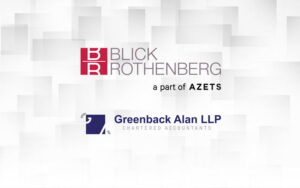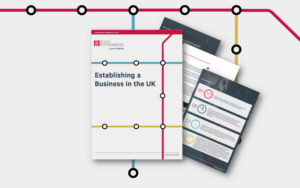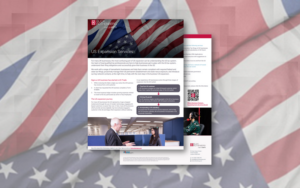
Changes to UK company size thresholds
We look at the changes to UK company size thresholds and sets out next steps in understanding the new thresholds
3 April 2025 | Author: Alice Brown
Alice Brown looks at the changes to UK company size thresholds and sets out next steps in understanding the new thresholds and how they may impact both reporting and compliance requirements.
Why is it relevant?
UK companies and LLPs are classified into one of four size categories — micro, small, medium or large. To simplify compliance and ease the reporting burden, the UK Government has announced an increase to company size thresholds for accounting periods beginning on or after 6 April 2025.
Who does it affect?
The changes may impact all companies or groups that rely on the exemptions currently available to them from audit and certain disclosures. It may also impact international groups with UK subsidiaries. The changes have been trailed for many years, and we welcome their introduction into legislation. They are designed to streamline regulatory requirements for smaller businesses and reduce administrative overhead. The revised thresholds are as follows:
| Category | Micro | Small | Medium |
| Annual turnover | £1m (previously £632k) | £15m (previously £10.2m) | £54m (previously £36m) |
| Balance sheet total | £500k (previously £316k) | £7.5m (previously £5.1m) | £27m (previously £18m) |
| Number of employees | 10 (previously 10) | 50 (previously 50) | 250 (previously 250) |
Large entities are those not qualifying in any of the categories above. If a company or LLP exceeds more than two of the specified thresholds in two consecutive years, it will no longer qualify for its current size classification.
For parent companies, there are also new size thresholds for group entities as follows:
| Category | Small | Medium | Large |
| Annual turnover | £18m | £64 | More than £64m |
| Balance sheet total | £9m | £32m | More than £32m |
| Number of employees | 10 | 50 |
More than 250 |
What do you need to know?
It is estimated that over 110,000 companies will transition from the small category to the micro category, while 14,000 companies will move from the medium category to the small category. Over 5,000 companies are estimated to move from large to medium.
The transition from small to micro will result in the following change:
- Simplified accounting framework and disclosure requirements if the company opts to adopt FRS 105.
The move into the small category could impact as follows:
- Potential audit exemption.
- Reduced disclosure and simplified reporting requirements under Section 1A of FRS 102.
- Exemption from filing a profit and loss account with Companies House.
The move from large to medium will lead to:
- Exemption from certain strategic report requirements, including the Section 172(1) statement.
SECR disclosures
Streamlined Energy and Carbon Reporting (SECR) disclosures are required by large companies only. These thresholds are not being changed, meaning that some companies, despite now qualifying as medium, will need to continue to present these disclosures in the Directors’ Report.
Group considerations
It is important to note that if a company is part of a corporate group and the group exceeds the size limits on a consolidated basis, the company may still report according to the size criteria based on its individual results. However, an audit will still be required, as the consolidated size of the wider group determines the overall reporting obligations.
FRC update
On 21 February 2025, the Financial Reporting Council (FRC) published an update outlining the revised reporting thresholds. This update features a summary of the key changes, along with revisions to relevant existing publications, and can be found on the FRC website.
What should you do next?
Companies should assess their size classification in advance to understand how the new thresholds will affect their reporting and compliance requirements and talk through the implications with their advisers as the rules can operate in a complex manner.
Contact us
For further information and to find out how we can assist you with these changes, please get in touch with your usual Blick Rothenberg contact or Nick Winters using the form below.
Contact Nick















